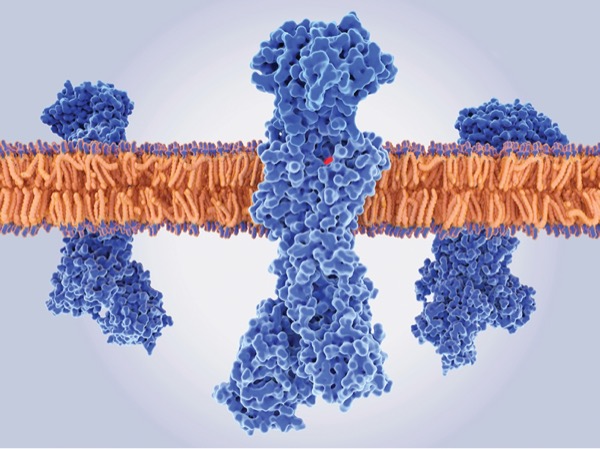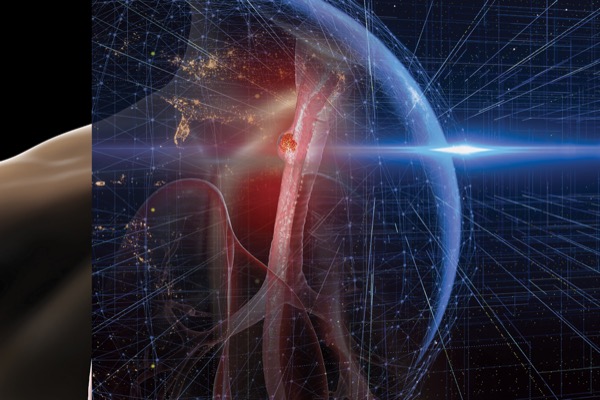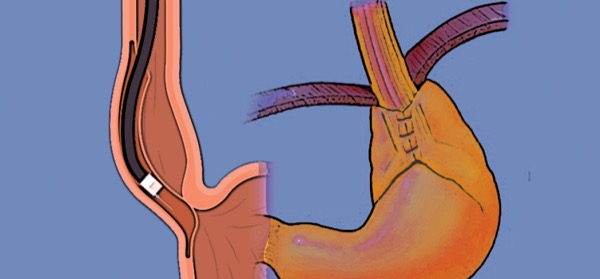
This month, I’ve chosen three recent excellent publications that address clinically important issues regarding gastroesophageal reflux disease.
In the first study, patients with typical GERD symptoms not responsive to treatment with proton pump inhibitors underwent 96 hours of pH monitoring. They had no endoscopic evidence of esophagitis. Acid exposure time on reflux monitoring predicted the ability to discontinue PPIs without affecting symptoms. The findings suggest that monitoring reflux after a few weeks of acid suppression can limit prolonged use of PPI therapy in patients who may not be responding to the drugs.
The second paper is a systematic review and meta-analysis that evaluated the prevalence of Barrett’s esophagus and esophageal cancer in patients with GERD, which is a major risk factor for these two complications. Global estimates, such as those provided by this study, can help individual countries devise their own individual screening programs and understand whether screening for Barrett’s esophagus and esophageal cancer is cost-effective in their GERD population.
Finally, patients with achalasia are increasingly being treated with peroral endoscopic myotomy (POEM), but one of the major adverse events of this approach is postprocedural GERD, which has been reported in up to 50% of patients. The third study I chose highlights the success of performing endoscopic fundoplication at the same time as POEM, as a preventive measure for GERD. Having a strategy to counter post-POEM GERD is critical, whether that means medical therapy, endoscopic fundoplication or even partial laparoscopic fundoplication.
Ambulatory Reflux Monitoring Guides Proton Pump Inhibitor Discontinuation in Patients With Gastroesophageal Reflux Symptoms: A Clinical Trial (Yadlapati R, et al. Gastroenterology 2021;160[1]:174-182.e1)
Researchers enrolled 100 participants with symptomatic GERD despite use of a PPI to undergo 96-hour wireless reflux monitoring. Patients were a mean age of 48.6 years, and 59 were women. Participants completed the Reflux Symptom Questionnaire electronic Diary (RESQ-eD) and the gastroesophageal reflux disease questionnaire (GerdQ) throughout the study.
Following a one-week period of discontinued PPI use, patients underwent reflux monitoring and continued for an additional two weeks without PPIs. Both physicians and patients were blinded to the results of monitoring when they subsequently decided whether to resume or discontinue PPI treatment.
Findings showed that 34% of patients discontinued PPIs after the three-week cessation period. Objective findings of GERD—or its absence—during reflux monitoring predicted successful discontinuation or resumption of PPIs in 71% of cases.
Patients who resumed PPI therapy had higher baseline RESQ-eD scores than those who discontinued PPIs (17.8 vs. 12; P=0.02) and had higher baseline GerdQ scores (9.3 vs. 7.2; P=0.01).
Each additional day with an acid exposure time (AET) over 4% was associated with a nearly twofold increase in the odds of resuming PPI treatment (odds ratio [OR], 1.82; 95% CI, 1.34-2.56; P<0.001). In contrast, patients with no days of AET over 4% were 10 times more likely to successfully discontinue PPIs than those with four days of AET above that level (OR, 10; 95% CI, 2.19-13.44; P<0.01).
Global prevalence of Barrett’s oesophagus and oesophageal cancer in individuals with gastro-oesophageal reflux: a systematic review and meta-analysis (Eusebi LH, et al. Gut 2021;70[3]:456-463)
This meta-analysis of 44 studies found a pooled histologically confirmed prevalence of 7% for Barrett’s esophagus in GERD patients (95% CI, 5.4%-9.3%), and a pooled endoscopically suspected prevalence of 12% (95% CI, 5.5%-20.3%).
Less than 40% of cases of endoscopically suspected Barrett’s esophagus were confirmed histologically. Of those that were confirmed histologically, 14% involved low-grade dysplasia.
Men were twice as likely as women to have Barrett’s esophagus and short-segment disease was significantly more common than long-segment disease.
The prevalence of Barrett’s esophagus varied by geography, with rates of histologically confirmed disease ranging from 3% in the Middle East to 14% in North America. Endoscopically suspected Barrett’s esophagus was most prevalent in South America (38%) and least common in Asia (2%).
Single-session endoscopic fundoplication after peroral endoscopic myotomy (POEM+F) for prevention of post gastroesophageal reflux - 1-year follow-up study (Bapaye A, et al. Endoscopy Published online Dec 8, 2020. doi:10.1055/a-1332-5911)
Researchers examined 25 patients with achalasia who had undergone single-stage POEM and endoscopic fundoplication. The combined procedure was technically successful in 92% of patients and averaged two hours. Twelve percent of patients had minor delayed adverse events that did not require intervention.
Follow-up assessments up to one year showed that 11% of patients had GERD at follow-up, including one patient with significant reflux symptoms. In addition, 18% of patients had asymptomatic grade A esophagitis with normal esophageal acid exposure time.
All patients had significant improvements in dysphagia, as measured by the Eckardt score (8.21 vs. 0.1 before and after, respectively; P=0.001), and 83% of patients had an intact wrap at one year of follow-up.
—Compiled and written by David Wild
This article is from the May 2021 print issue.




